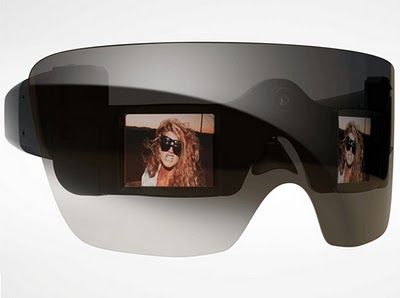
Next-Gen VR headsets that we can't wait to see published soon!It was a new year, we thought, and what better way to celebrate than to escape into the virtual world, Amirite?
Since the beginning of the year, COVID-19 has had the globe on lockdown, and as a result, more and more people have been yearning to escape reality. Unfortunately, for a few months now, global and national travel bans have kept most people cooped up in their homes. Many trapped at home will be happy to learn that virtual reality (VR) has crossed a technical barrier technology, ensuring that VR headsets will soon become household objects.
But to get to where it is now, VR has come a long way. The predecessor of the bug-eyed headphones of today dates back to 1838, when the first stereoscope in the world invented. Stereoscopes operate by projecting a single image using twin mirrors. This device developed into the beloved View-Master of the 20th century which was patented in 1939 and today is still very popular.
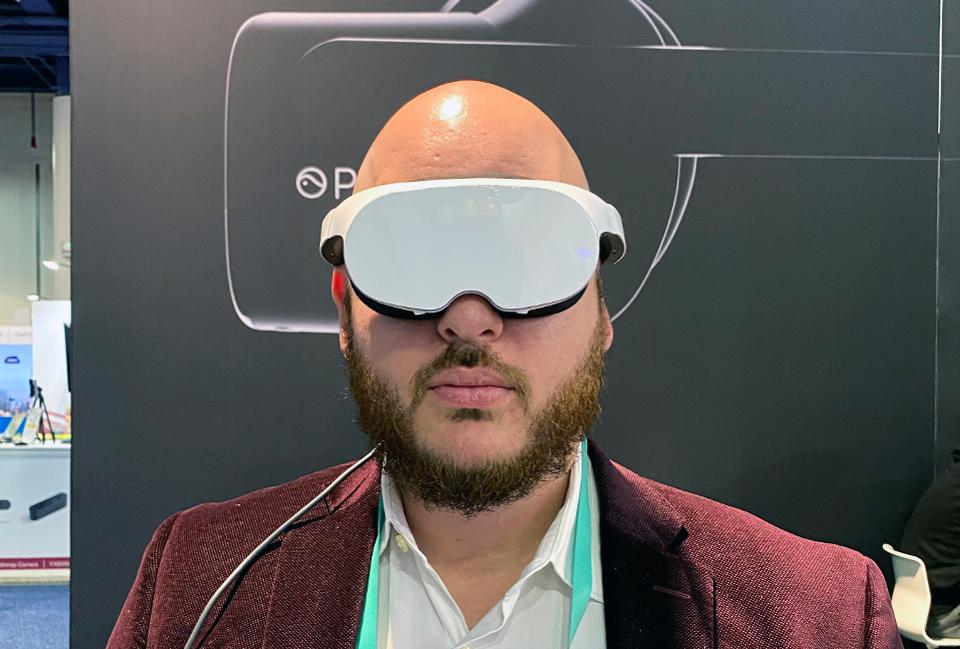
With Super hot VR shutting down in one week in 2019 with $2 million in revenue, and reports that Half Life: they will release Alyx in May, we are ready to test drive the most exciting VR headsets that are currently hitting the market.
The VR headsets we had our eye on could appeal to various corners of the VR market, but they have one thing in common: for our users, a totally immersive experience.
Oculus and VIVE are VR hardware companies that will shortly be launching two new VR headsets each. Both rivals include a standalone headset and a PC VR headset optimized for technical and consumer use.
Best Overall: Xbox VR
Autumn 2020 Release Due-
Microsoft has been working with Valve and HP to provide you with the ultimate VR experience soon. Although traditionally, Microsoft has devoted little of its time to VR growth, they have seen a recent uptick in Sony competition.
With their PSVR, the latter have already put themselves ahead of the game. However, as their game Half-Life: Alyx broke ground with its groundbreaking integration of VR technology, Valve is a valuable ally in VR development. Microsoft, like Sony, however, has made no official announcements about the release of its groundbreaking VR headset, but that doesn't mean we can't talk about the exciting features it may have.
So, what does the Xbox Series X VR headset have in store?
For instance, HP claims this headset will deliver "a more immersive, comfortable, and compatible experience than the previous generation," and promises to set a new VR technology standard.
Although no official specs have released yet, fans speculate it might be very similar to HP's popular Reverb headset, which boasts 2160x2160 resolution per eye. This is an important element on which we can construct the next incarnation of their VR headsets.
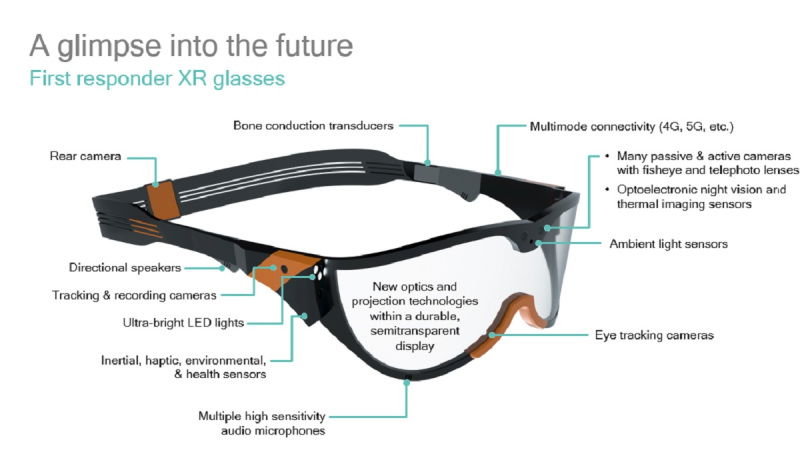
Some gamers claim, however, that the next generation of the Reverb would more focused than enthusiasts towards professional players. About why? The Index, their best-selling headset to date, not only priced for pro gamers but also features state-of-the-art motion tracking technology, near-ear sound technology, and impressive visual experience with LCD subpixels up to 50% higher.
It is likely to be a revolutionary breakthrough in both gaming and VR technology if the Index is any sign of what this upcoming Xbox VR headset would be like. You can sign up for updates about this upcoming VR headset on HP's website if you're champing at the bit for more details.
Lookout Also High Value: Valve Index
Taking out an extensive field of view and hyper-crisp show of the top position.
Our Top Trending On-Site Video (Advertisement)
We've got you covered, whether you accept alternate worlds on a PC, tablet, console, or as a standalone freestyler. Here are the four unpacked VR headsets that we're waiting for in 2020.
We were underwhelmed when we learned the Valve Index was gunning for the top spot among VR headsets in 2020. We weren't expecting much, after the Vive Pro failed to deliver on its wide-scale VR.
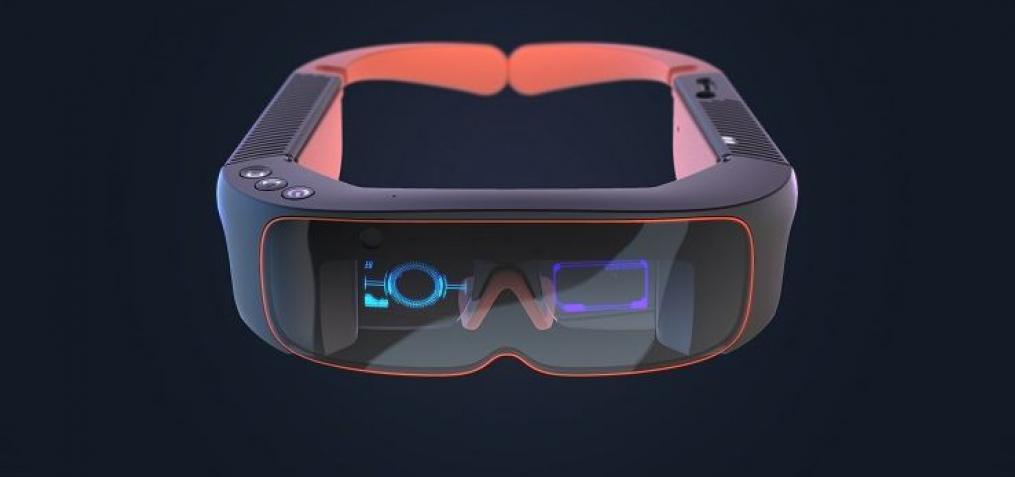
But the test drive was surprising, and the community's devoted enthusiasts equally persuaded that the headset of 2020 is the Valve Index. Even when tested on an older GPU, the ultra-crisp show runs smoothly and the field of vision is the widest we've seen in tests this year. With an increased refresh rate, and super-responsive 'knuckle' power, the Valve Index rounds out its campaign. The funky controller helps the headset to track your fingers' every movement.
However, it isn't without its flaws. Running updates proved to be a little clunky, and many times caused problems with connectivity. The setup was not as smooth as we would expect in a top-range model, either. Overall, these were very minor problems for a headset that delivers outstanding screen resolution, a solid refresh rate, and allowed us to bring in the virtual world in some pretty comfortable hours.
Among the non-mobile gaming set, this is likely to be a go-to headset, and the hardware we'll search for around the house quickly. The Valve Index is easily our top recommendation for 2020 VR headsets if you are running a strong GPU system and have the cash to splash.
The Pros
Ultra-reactive
The broadest field of view
Show of Crisp
Wear comfortably
Negatives
Only for hard-core GPU systems
Pricey-Pricey
Best for gamers: VR for PlayStation 5
Autumn 2020 Release Due:
PSVR waves made the best-selling VR headset of all time, primarily because of the critically praised Half-Life: Alyx. Its cheap price nods to subpar hardware, however: a refresh rate of 120 Hz, a resolution of 1920x1080, and a split between two eyes create a relatively underwhelming VR experience.

Patrick O'Luanaigh, CEO of VR developer Ndreams, confirms that Sony's VR technology dated, adding, "They need to update their hardware if VR is going to continue beyond the next year or two." Since it's dated, and by then, it'll be even more dated. If they didn't continue to endorse VR, I would be very shocked. However, that Sony is cooking up something even better to step up their VR headset game.
O'Luanaigh predicts that the next VR headset from Sony might not launched with the PlayStation 5 in tandem, but as a mid-gen update that does not appear for a few years. Sony has made no confirmations regarding the release date of PSVR 2 as of right now. Let's talk about some of the exciting changes the headset will have in the meantime.
The specs of Sony's second generation of PSVR are swirling with plenty of rumors. First, the headset will tie over your head, granting you the ultimate freedom of mobility that will only increase your experience of gaming. In addition, cameras will abound on the next PSVR incarnation: on the controllers with rear-view cameras and cameras, allowing for a more detailed AR experience. These cameras will allow you to bring the game right into your living room, as they monitor all 360 degrees of your motion. Your living room will easily transform into a battlefield or a canvas that you can paint on, making the actual and the virtual a mixture. Screens in the eyepieces will also project 3D images right into your retina and allow you to observe all of your surroundings in VR.

Previous release: VR for Playstation
The stylish headset and stable library of games make this the winner of the console.
We are suckers for the VR hit behemoth, Eve: Valkyrie. With Sony being the sole owner of Star Wars Battlefront: Rogue One X-Wing Mission, and Batman: Arkham VR, it makes sense to check out Sony's VR headset offering for console loyalists.
Well, look at it, we did. The headset is simple to wear and well built, from a design point of view. The setup was easy, and we had to provide the PlayStation VR's intuitive controls and sensitive tracking with props. The help of the publisher was also good.
The refresh rate on the PS headset at 120-hertz was just marginally lower than our overall champion, the Valve Index, but when we compare the PS offering with those of Ocular, we lose some lens resolution.
Affordability shines where resolution in the rankings tips the PS VR down. A PS4 console and this high-end headset can purchased for less than our overall winner's price. If you're done with gaming (hush your mouth) and ready to put in some theater time, the headset also allows you to turn to Cinematic mode.
Overall, like our other Best in Category VR headsets, the PlayStation VR is a worthy competitor, and one of the most affordable on our list. I say, except for the next one.
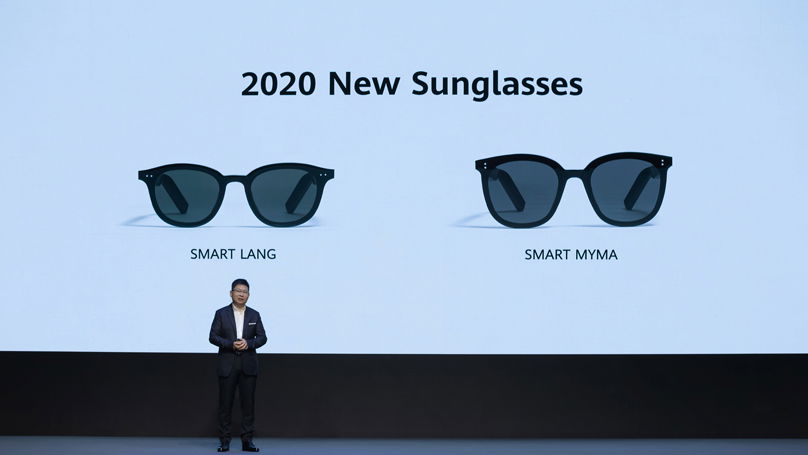
The Pros
Sleek, fashionable headset
Library Stellar from a trusted brand
Simple setup
Priced fairly,
Negatives
A slight visual bleeding
They need a lot of peripherals for an immersive experience.
Best for a budget: Oculus Go (Released)
Without sacrificing results, the best bang for your buck.
We're all going to say it: there's an under-priced Oculus Go. Get it now, before Oculus knows this, and at a high-end price tag, the Go gets forced into the darkness of reasonably excellent results.
We've got complete wireless capability to begin with. The visuals are translucent; the resolution is high; the colors balanced. The Go also gives us a better display than some of Oculus' top performers: 1280 x 1440 per eye, compared to the Oculus Rift's 1080 x 1200 per eye. The Oculus Go comes with some pretty cool games and applications, with a large social games library available. This brings us to the place where Go shines.
If we're going to thank Facebook for something, it's going to be its introduction into the Oculus Go and the entertainment and social VR laser concentrate. Oculus provides a feature for rooms that allows you to build your own virtual home. Invite friends over, watch Netflix, and post seamless videos without physically inviting friends over.
If you're already a VR fan, you could note the Oculus Go's one big blind spot: the lack of equality. The headset lacks room-tracking features, which, if you used to fully integrated room tracking capability, may be a deal-breaker. Fortunately, what the Go lacks in motion spectrum, it makes up for with its visuals.
The Pros
Wireless Networks
App Solid; game library
Strong social concentration
Clean Design Clean Design
Outstanding graphics and low bleeding
Negatives
No Room-Tracking features
Pretty reliant on support for smartphones
Quest Oculus (Worth a Mention!)
2021 New Release due
Oculus, owned by Facebook, is hard at work on their next VR headset installment. Delays in product production and the global supply chain because of COVID-19, however, have indefinitely held back its release date.

This delay has not prevented Facebook from researching possible predecessors to the widely successful Oculus Quest. They claimed a few of the test models to be smaller, lighter, and faster to provide a more realistic and immersive VR experience with image refresh rate.
As the previous model weighed 1.25 pounds and allegedly gave its users head and neck aches after long-term use, a smaller and lighter Oculus Quest means more extended playtime for its users. Models weigh closer to 1 lb. In research, which would certainly take a load away from users—literally.
In addition, Facebook is trying to remove the cloth on the sides of the latest Oculus Quest and replace it with plastic, making it more like their famous Oculus Rift S. There's also talk of removing the velcro head strap of the current model with something more elastic, making it easier to pop on and off for users.
The manufacturing delays listed earlier, however, point to a release date of 2021. In answer, by creating an AR headset as well, Oculus takes advantage of this unexpected "downtime." Oculus will, however, only continue to work on software and app creation for this headset, as production for this model has also halted indefinitely.
Previous Release: Released in Spring 2019 for approximately $399.
For some time now, Oculus Rift headset owners have been dreaming of jumping without a wire into The Rift. To run VR games and experiences, the wire-free standalone headset does not need a laptop or monitor. Anybody can set it up and get it running straight out of the box as an all-in-one. What users get is an OLED display resolution of 1600x1440 per eye and 64 GB of storage.
Two revamped Touch Controllers come with the Oculus Quest. They have buttons for handles, trigger buttons, buttons for A/B and X/Y, and joysticks. The 6DoF and four inside-out sensor monitoring coordinates dance and various movements outside space scale with no external sensors.
Play time is exciting with Sparta, Dead and Buried II, Dance Central and over 50 launch games. The built-in audio is sure to make music more like a band and enemies in your periphery in dance and rhythm games like they are with you in the living room.
The Pros
Wireless, flexible VR
PC Wired Link
Plug-and-play, almost
Strong Games and Software library
Cool innovations on the horizon
Negatives
Still somewhat unstable innovations
Released and priced around $399 in Spring 2019.

Following the Oculus Rift, the Oculus Rift S is the next generation PC VR headset. Many who wondered when Oculus would release the next high-end headset could stop holding their breath. A VR headset that is suitable for gaming, live streaming, and better quality experiences overall, is what users with compatible laptops or computers can get.
The days of extra USB adapters and cables for sensors gone, with inside-out monitoring for the Oculus Rift S. Five sensors monitor body motions and touch controls in a play area. If that's what they're meant for, no more getting locked into forward-facing games and experiences. To see what's going on outside the headphones, it will also have Pass through +.
The resolution per eye of the 1280 x 1440 LCD monitor is lower than that of the Oculus Quest, but at least there will be more games. Gamers and those only beginning VR gaming will have titles to look forward to, including Asgard's Wrath and Storm land. Oculus took notice of the wishes of users to make it easier to apply halo headset design and fit wheel with better face cushioning.
The Pros
Light headset (< 1 lb.)
Room-tracking for
Strong game collection
Interface that is intuitive
Controllers to Contact
Priced fairly,
Negatives
A PC Needs
Something quite close to the Rift
Released at $799 on April 15th.

A standalone VR headset pivoted towards business and technical usage is the VIVE Focus Plus. The wireless design makes it portable so that, when required, users can switch from the office to the room or expo floor. With 6DoF motion, it has inside-out tracking so that digital illustrations, plans, and designs capture distinct movements and details.
The pair of VIVE Focus Plus controllers will press, swipe, use virtual resources and play games with the headset with six degrees of freedom. For menu and VIVE selections, the controllers have a track pad, trigger keys, grip buttons and buttons. Kiosk Mode, Gaze help, and multiple monitoring of headsets make it a headset ideal for team use or gaming in groups.
It comes with a size of 2880x1600 and AMOLED, which is excellent for viewing 360. virtual worlds. Interacting with simulations in training would be as close to true as it can come. The Focus Plus also offers greater visual quality than most mobile headsets by designing or playing new games and experiences from the VIVE WAVE Platform.
Cosmos VIVE (Released)
The date of release and price not yet known.
The VIVE Cosmos is a PC VR headset with no external sensors to line up that is used with a high-powered gaming machine. While mum is the word about her release date and price, they say consumers to be worth waiting for.
The setup should be easier for those who aren't great with modern tech, with two cameras on the headset and no outside tracking device. VIVE Cosmos makes it simpler for the next generation to plug and play on a PC VR headset. Rumors have been that it could attach to mobile devices. It worked out very well.
VIVE notes that for crisper quality images, the top-secret headset has RGB displays and the headset and controlled pairing enables 6DoF movement. The new controllers are being updated to incorporate joysticks and buttons instead of a track pad-based controller system.
The monitor will open up like a visor, so it will be simpler than most headset strap systems to take breaks and hand it over to friends and family. For prolonged gaming sessions, the headset also features a crown shape that rests ergonomically on the head.
The original VIVE and VIVE Pro had the VIVEPORT platform for playing games, and they'll have VIVEPORT Infinity when VIVE Cosmos is out. Their new monthly subscription program enables users to play to their heart's content with smartphones, games, and experiences.
You should also check out the following articles:
- What is the metaverse? and how does it work?
- Apple’s first headset will focus on “high-quality” games, reporter claims
- November 26, 2021 is Black Friday. Deals on Video Games and Virtual Reality in 2021
- Facebook wants to build a metaverse. Microsoft is creating something even more ambitious.
- Metaverse’s Cryptocurrency Leaps in Price After Facebook Rebrands as Meta
- Best VR Gifts for Christmas in 2022
- How to succeed in the virtual reality world of tomorrow?
- Best VR Headset cyber Monday 2021
- Books you must read about virtual reality
- Best New Augmented Reality Books To Read In 2021
- virtual reality Life 2029
- According to a report, Meta is considering opening physical stores.
- US$ 4.7 Billion- The global augmented reality gaming market
- The smart glasses revolution is about to get real
- Consumer Brands Reinventing Marketing in the Metaverse
- Imagine Making Money in Rec Room
Subscribe now to our YouTube channel
Subscribe now to our Facebook Page
Subscribe now to our twitter page
Subscribe now to our Instagram
Subscribe To my personal page on linkedin
Subscribe To my personal page on tiktok page for those who love to dance :)
Don't forget to be my friend. Sign up for my friend's letter. So I can tell you ALL about the news from the world of VR&AR, plus as my new friends I will send you my new article on how to make money from VR&AR for free.


